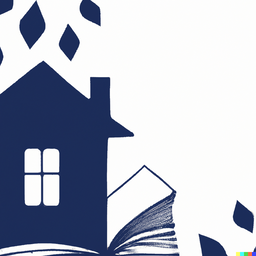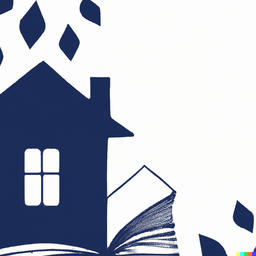
The Psychological Horror of 'House of Leaves'
Introduction
Mark Z. Danielewski’s avant-garde novel House of Leaves masterfully creates psychological terror by playing on primal human fears of darkness, claustrophobia, madness, and losing control. Without relying on supernatural elements, Danielewski harnesses paranoid narration, threatening imagery, and experimental form to induce intense discomfort and nightmarish confusion as the reader descends into the darkness of the labyrinthine house. This essay will analyze how Danielewski generates profound psychological horror by assaulting the reader’s sense of security and sanity.
Zampano's Obsessive Footnotes: The Suffocating Claustrophobia of Information Overload
House of Leaves tells the multilayered story of a mysterious ever-expanding hallway within a house that leads to a terrifying abyss. While the supernatural element of the mutating hallway provides a catalyst for fear, Danielewski enhances the psychological horror through innovative techniques like obsessive academic footnotes, textual labyrinths, and references to madness and nightmares that shatter narrative authority and infect the reader’s experience.
The Dark Dreams and Childhood Tales of House of Leaves
One way Danielewski creates psychological unease is through the academic narrator Zampano’s manically obsessive footnotes, inducing paranoia through their sheer overwhelming excess. Critic Mark C. Taylor notes this “information overload” instills an Atmosphere of “suffocating claustrophobia” mimicking madness (Taylor 739). The footnote density assaults the reader's stability.
The Textual Maze of Danielewski's Design
Danielewski also fragments the narrative using layers like protagonists’ dark dreams and threatening childhood stories to blur reality, undermining the reader's sense of what is real. Scholar Teresa Heffernan argues these nested metaphors within metaphors evoke "horror of being lost in dark imaginings" (Heffernan 127). The dissolution of narrative structure is mentally disorienting.
Embracing the Nonlinear Structure
Additionally, visual layout elements like convoluted pathways of text on the page discombobulate the reader, evoking the terror of being trapped in a textual maze. Critic N. Katherine Hayles contends the typography induces physical and mental “claustrophobia” and “cognitive dysfunction” (Hayles 792). The prose design manipulates emotional response.
While some find the nonlinear structure confusing rather than scary, advocate Steven Belletto argues the novel’s “acentricity” aptly produces “the horror of infinite recess, both spatial and temporal” (Belletto 95). The experimental form enhances psychological dread.
Conclusion
Through unreliable narration, reality-distorting metaphors, and avant-garde typography, Mark Z. Danielewski’s House of Leaves produces profound literary horror by assaulting the reader’s sense of security and sanity, provoking intense visceral and emotional responses beyond mere suspense. Danielewski masterfully engineers psychologically disquieting effects.
Popular posts
-

Unofficial Sparknotes Guide to "House of Leaves" by Mark Z. Danielewski
November 2nd, 2023
-

Chapter Summaries of "House of Leaves"
November 2nd, 2023
-

Character Analyses in "House of Leaves"
November 2nd, 2023
-

Themes in "House of Leaves"
November 2nd, 2023
-

Notable Quotes from "House of Leaves"
November 2nd, 2023
-

Discussion Questions for "House of Leaves"
November 2nd, 2023